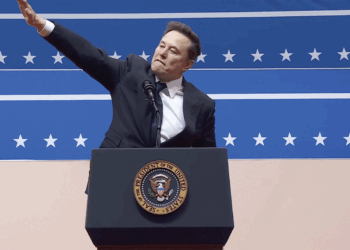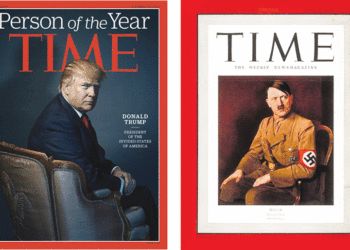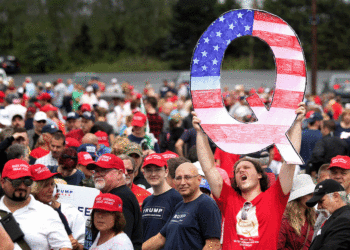Hanuka is back!
Perhaps some wonder when it ever was gone.
According to Jenna Weissman Joselit, the Charles E. Smith Professor of Judaic Studies and professor of history at George Washington University, “Well into the 1880s, Chanukah fared poorly in America, a victim of neglect.” She quotes the despairing voices of 19th century American rabbis, in an article for Reform Judaism magazine (Winter 2008): “‘The customary candles disappear more and more from Jewish homes,’ lamented Rabbi Gustav Gottheil in 1884. ‘Kindle the Chanukah lights anew, modern Israelite!’ declared Rabbi Kaufmann Kohler just a few years later. ‘Make the festival more than ever before radiant with the brightness and beauty of love and charity.’”
Instead of kindling Hanuka candles, Americans “were adorning their homes with greenery and parlor illuminations and eagerly exchanging gifts in the spirit of Christmas. The purchase of Christmas gifts, commented the Jewish Daily Forward in 1904, ‘is one of the first things that proves one is no longer a greenhorn,’” the Jewish studies professor writes.
(Looking back in the American Jewish World archives, there was a special “Hanukah Number” published on Dec. 14, 1917. The cover featured a poem, “The Feast of Lights,” by Emma Lazarus, the poet best known for her verse on the base of the Statue of Liberty. Curiously, the graphic above the poem depicts the traditional seven-branch menora, the ancient Israelite symbol, and not the nine-branch hanukia. On a tangent unrelated to Hanuka, the Jewish World then had offices in the downtowns of both Minneapolis and St. Paul.)
However, by the 1920s, and gaining great momentum in the 1940s, Hanuka — a minor holiday that is recorded in the Apocrypha, and not in the Tanach — was well on its way to becoming the “Jewish Christmas.”
A 1993 study by then Stanford religious studies professor Arnold M. Eisen, who is now the chancellor of the Jewish Theological Seminary, showed that a “majority of American Jews no longer had Christmas trees. In 82 percent of entirely Jewish households, a Christmas tree had never been displayed,” according to Rabbi Joshua E. Plaut, author of Silent Night: Being Jewish at Christmas Time in America: Proclaiming Identity in the Face of Seasonal Marginality.
In an article, “Jews and Christmas,” for MyJewishLearning.com, Rabbi Plaut adds that “sociologist Marshall Sklare’s research in the 1950s and ’60s on second- and third-generation Jews established that Hanukkah — formerly a ‘minor’ Jewish holiday — had gained in importance when it became the Jewish alternative for Christmas. ‘Instead of alienating the Jews from general culture,’ wrote Sklare, ‘Hanukkah helps to situate him as a participant in that culture. Hanukkah, in short, becomes for some the Jewish Christmas.’ Ironically, by elevating Hanukkah as a Jewish alternative to Christmas, American Jews had invented their own holiday tradition through a Christmas mirror.”
So, Hanuka has become something of an American Jewish response to the dominant society’s celebration of Christmas. And just as the observance of Christmas, which celebrates the birth of the Christian deity, has been transformed into the engine of this nation’s retail economy, Hanuka has been commercialized, too.
Weissman Joselit writes: “By the 1940s, gift-giving had become an integral aspect of Chanukah. ‘Jewish children should be showered with gifts, Hanukkah gifts, as a perhaps primitive but most effective means of making them immune against envy of the Christian children and their Christmas presents,’ advised the authors of What Every Jewish Woman Should Know, a guidebook to modern Jewish living. And although children remained the chief beneficiaries of the holiday largesse, grown-ups were not immune to its pleasures. As the Hadassah Newsletter pointed out, ‘Mah-jong sets make appreciated Chanukah gifts.’”
The historian continues her survey of the festival’s rise, noting that in the 1950s, “American Jews no longer had to dread the ‘cruel month’ of December. Chanukah’s accoutrements had grown to include paper decorations, greeting cards, napkins, wrapping paper, ribbons, and phonograph records. And in the years following World War II, the outside world increasingly freighted Chanukah with the same cultural and social significance as Christmas, yoking the two together in demonstration of America’s ‘cultural oneness.’ Public school educators in particular convened a ‘holiday assembly’ on a ‘compromise date’ in December in which a Christmas tree and a ‘Menorah candle’ as well as the singing of Chanukah hymns and Christmas carols figured prominently.”
It’s good that Jews in this land feel so much a part of the American tapestry that they take a minor holiday and spin it into something grandiose. But in competing with the orgy of consumerism that attends Christmas, we run the risk of debasing the Festival of Lights, losing the uplifting message of “dedication” to maintaining Judaism in the face of external oppression. In fact, American Jews enjoy unparalleled religious freedom today; so, it’s understandable that the celebration of Hanuka would take on the coloration of Christmas, as far as the emphasis on gift-giving.
In another essay for MyJewishLearning.com, my friend Natasha Rosenstock (the former associate director of the American Jewish Press Association), acknowledges that giving gifts might make Hanuka seem like a “Jewish Christmas,” but there “can be value in taking time to select a thoughtful and tasteful gift for a child you love. And there is undeniable pleasure in seeing children excited to play with new toys — especially when those toys are helping them learn and develop new skills.”
In the spirit of avoiding conspicuous consumption, Rosenstock commends the advice of Rabbi Sandy Rubenstein, director of Jewish Chaplaincy Services at the Jewish Social Service Agency in Rockville, Md., who suggests that “families can light candles to honor justice or peace, or talk about what brings light into one’s life or what places in this world need more light. Even with gift giving, family holiday celebrations can still aim to foster social consciousness.”
Jewish families can, at least, set aside the gifts for one night of Hanuka, and donate money instead to a worthy nonprofit group.
On the Gregorian calendar this year, Hanuka falls about three weeks before Christmas. The temporal separation provides an opportunity to consider the unique lessons of the Festival of Lights on their own terms. We can light the hanukia, eat some latkes, and talk about the struggle for religious freedom waged long ago by the Maccabees and what Hanuka means for Jews today and into the future.
Happy Hanuka, from all of us at the American Jewish World.
— Mordecai Specktor / editor@ajwnew.com
(American Jewish World, 11.26.10)


















